Day 2 of a 4-day Spring Migration tour in Norfolk. It was another lovely bright and sunny day, with the easterly breeze increasing in the afternoon and keeping a lid on temperatures. We spent the day in NW Norfolk.
While we were loading the minibus outside the guest house in Hindolveston, a Garden Warbler started singing in the garden next door. We saw it briefly hop up into the top of an apple tree before it dropped down out of view. A scarce bird here in the village. A couple of Swifts flew over and one or two House Martins were in and out of the roof across the road.
On our way west, we slowed and lowered the window as we passed the Raptor Watchpoint at Swanton Novers. The unmistakable song of a Nightingale floated in through the open window, so we turned into the car park. This bird has been here about a week now and they are very rare now in Norfolk, so it is very nice to hear it here.
We stood for a while and listened, enjoying the wonderful flutey song. A Yellowhammer flew over and landed in the hedge by the road, climbing up into the top to sing briefly. A couple of Whitethroats kept popping up in the scrub in front of where the Nightingale was hiding and another Garden Warbler sang nearby and then flew over to the back hedge.
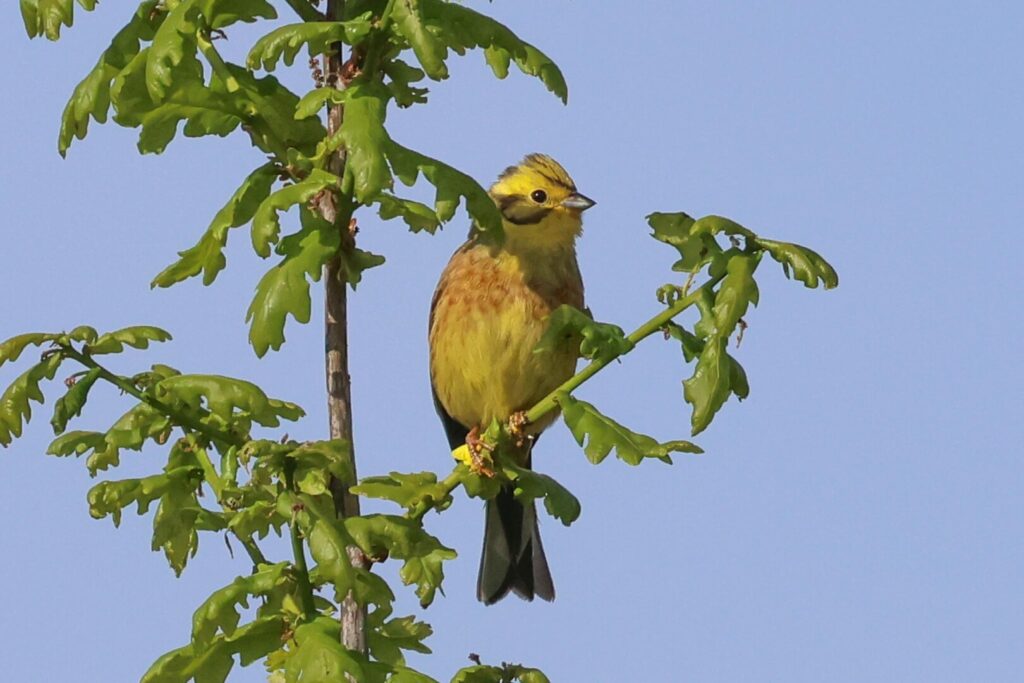
The US Air Force was out already this morning, unfortunately. Two F-15s chased each other round and round overhead, making a right racket. The Nightingale continued to sing gamely above it all, not completely drowned out by the roar of the engines. As the F-15s drifted off the Nightingale stopped and we decided to move on.
Our main destination for the morning was Snettisham. As we walked up towards the gate, a Chiffchaff was singing from the wires. A Chaffinch and a Greenfinch were perched nearby and several Swallows hawked round overhead.
Walking in along the main path, we could hear another Nightingale singing ahead of us first – our second of the morning. Then, as we got nearer, came the delicate purring of a Turtle Dove. We stood and listened to them. One Norfolk Nightingale is rare enough these days, but we can’t remember the last time we heard two here on the same day. And hearing Turtle Doves purring is increasingly a thing of the past too – a sad indictment of modern times. Catch them while you still can!
We managed to find a spot where we could see the Turtle Dove through the bushes. It was perched in the top of a large hawthorn, preening now, so we got it in the scope. After a while, it took off and flapped up quickly to display, circling down with tail fanned. It landed in the top of another hawthorn further back where we had a clearer view, admiring the black-and-white striped pattern on the side of its neck and rusty patterning on back and wings.
The Nightingale was still singing on and off and we could just hear a Cuckoo calling in the distance too. There were now two Turtle Doves purring, one either side of us, and we turned to see the one behind us drop down onto a branch just a few metres from the path. Magical!
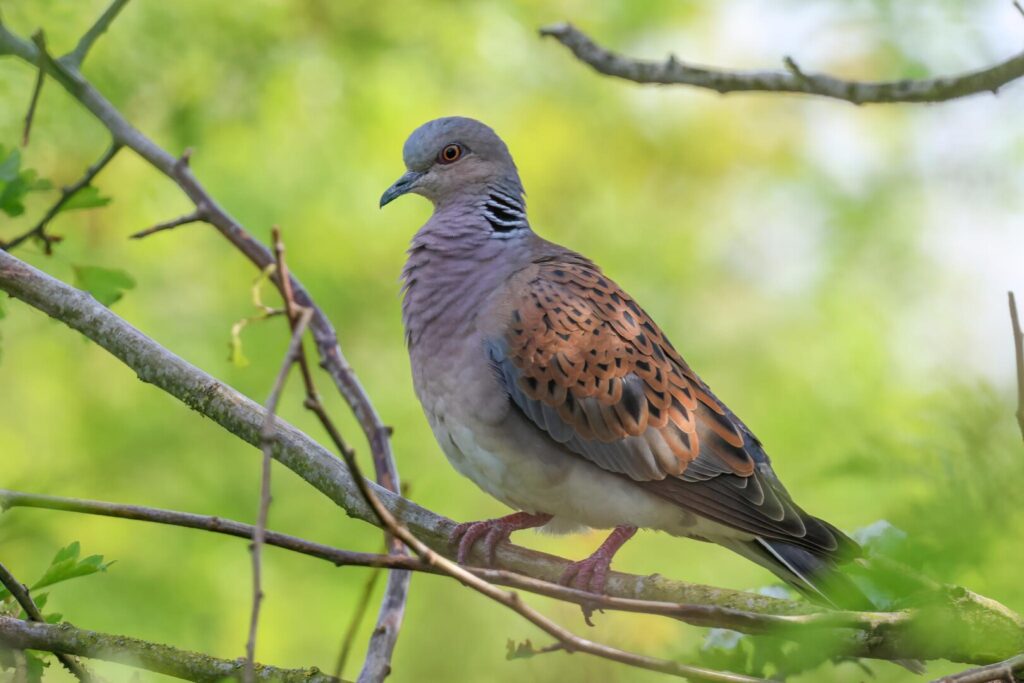
Eventually we had to tear ourselves away. Walking on up through the bushes, there were still a few warblers singing – Chiffchaff, Blackcap and Common Whitethroat. A couple of Cetti’s Warblers shouted from deep in the undergrowth. Two Sedge Warblers chased round through the trees and across the path. Another Turtle Dove called ahead of us.
There were a few Linnets around in the open area and a male Stonechat perched up on the top of a bush beyond. We continued on before cutting across and up the path onto the inner seawall. Looking out across Ken Hill Marshes now and there were lots of geese, ducks and Black-headed Gulls around the pools.
We walked slowly north, scanning the marshes on the way. There were Lapwings and Redshanks but no sign of the Ruff which have been feeding here recently, nor the lingering Glossy Ibis which was reported still present this morning. We bumped into someone who told us there was a Grasshopper Warbler singing further up in the Coastal Park so we continued up along the bank. We couldn’t hear the Grasshopper Warbler now, so we decided to continue on to the north end of the marshes.
Past the kissing gate, we quickly found the Glossy Ibis feeding on the marsh below the bank. Through the scope, it was looking quite glossy now in the sunshine. There were more waders here – a large roosting flock of Oystercatchers, some of which started to fly off back towards the Wash. We could see small groups of Black-tailed Godwits too and finally found two smart Ruff as well, males moulting into breeding plumage, although they were rather distant.
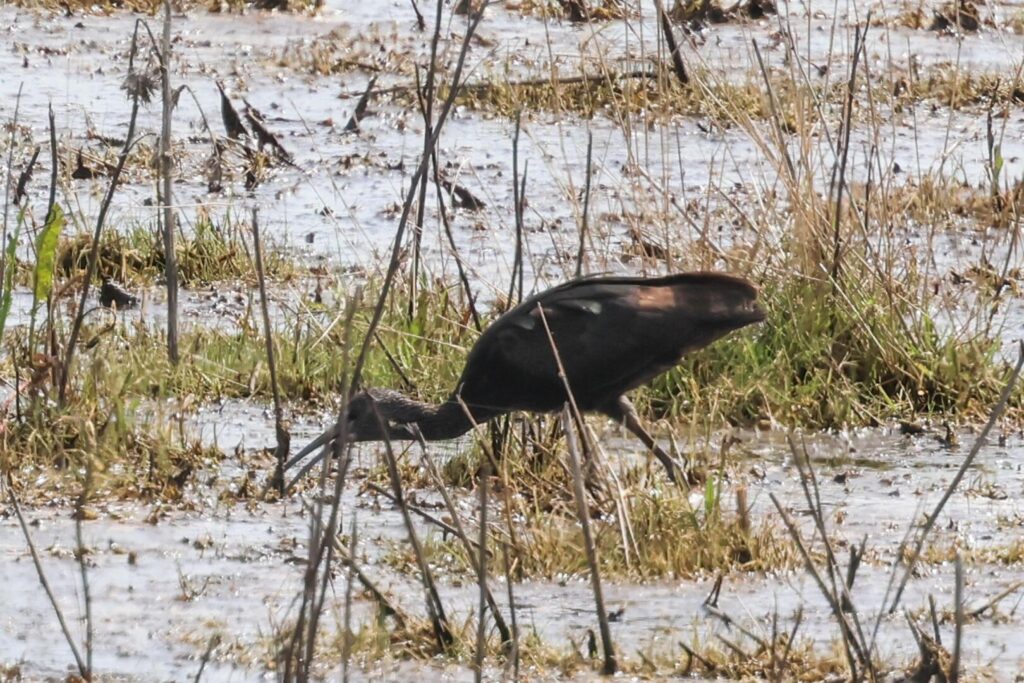
A pair of Avocet on the pool at the far bank looked like they might be about to mate, the female bowing with bill held low over the water while the male circled round preening. A lone Black-tailed Godwit was on the pool too. A female Marsh Harrier dropped down in the grass behind the brambles. It was mobbed briefly by a Lapwing and disturbed a Meadow Pipit and a Reed Bunting which perched on the brambles nearby. It was out of view unfortunately, so we couldn’t see what it had found, before it eventually flew off again.
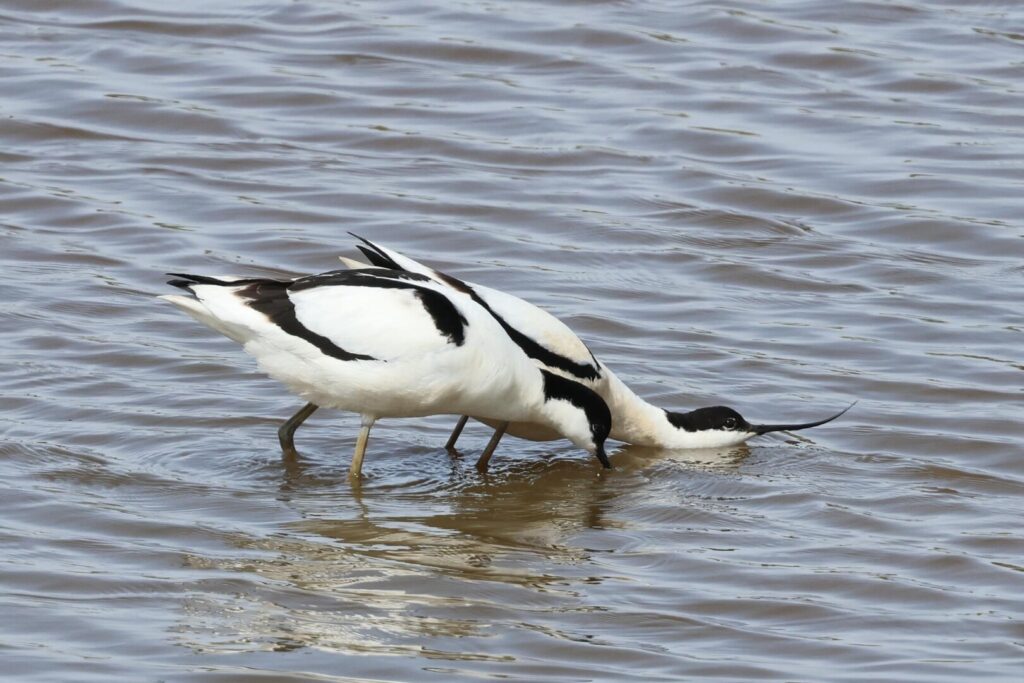
From time to time the Lapwings would race up and down twisting and turning past us, displaying. Two Wigeon were over on the far bank. Lingering winter visitors, most have long since left us to head back to Russia for the breeding season. There were a few Teal still here too. Scanning over the trees at the back, there were a few Common Buzzards and a Red Kite or two circling up in the sunshine. Then we picked up a distant Goshawk which thermalled up quickly and drifted off. A nice bonus.
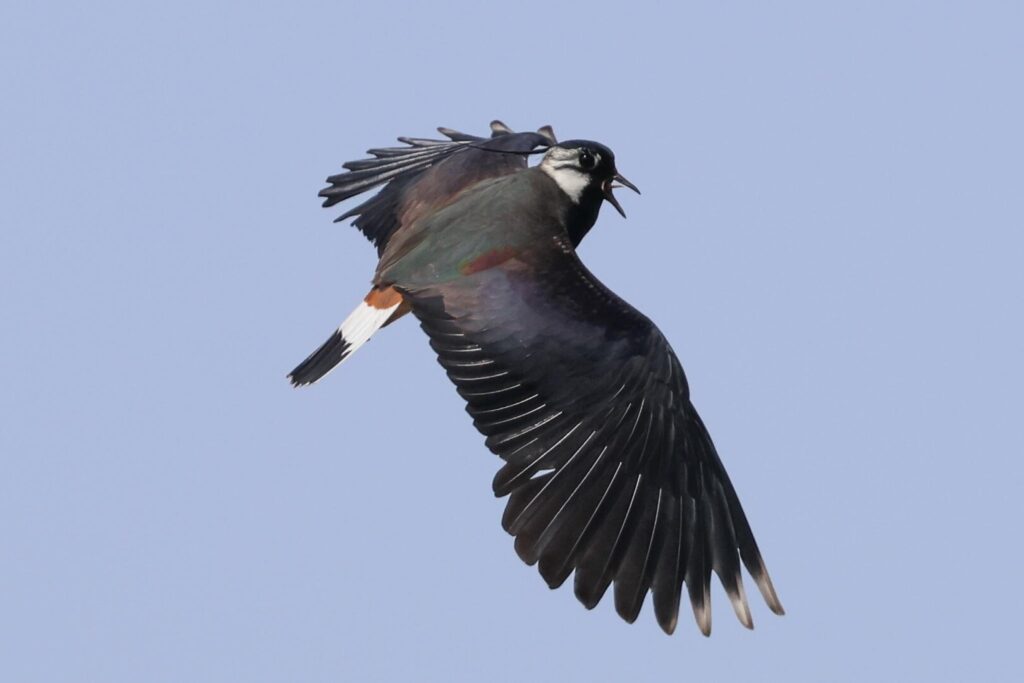
We walked back to the kissing gate and cut across on the bank to the outer seawall. The tide was starting to go out on the Wash and there were lots of Oystercatchers out on the mud but surprisingly few other waders. We could only find two Bar-tailed Godwits. We soon realised why, as we picked up a Peregrine flying north along the shore. After it had cut in over Heacham, we looked out again to see a large flock of several hundred Knot and more godwits swirling round over the water.
As we walked back along the seawall, we could see three people sitting in the grass where the Grasshopper Warbler had apparently been reeling earlier. We walked over and they told us that they had heard it about twenty minutes ago, so we decided to stop and listen. All was quiet and it was the middle of the day now so it seemed like it might be a waste of time, but we didn’t have to wait too long before we heard a brief burst of reeling a bit further down.
We made our way over and stood for a while. We picked up a distant Hobby over the marshes beyond. The Grasshopper Warbler reeled again several times briefly. Frustratingly, at one point it came up into a low bush but was chased by a Sedge Warbler and dropped back down out of view. At least that was encouraging so we continued scanning and after a while our perseverance paid off. The Grasshopper Warbler came up into the side of a larger bush where it perched in full view reeling, where we could get it in the scope.
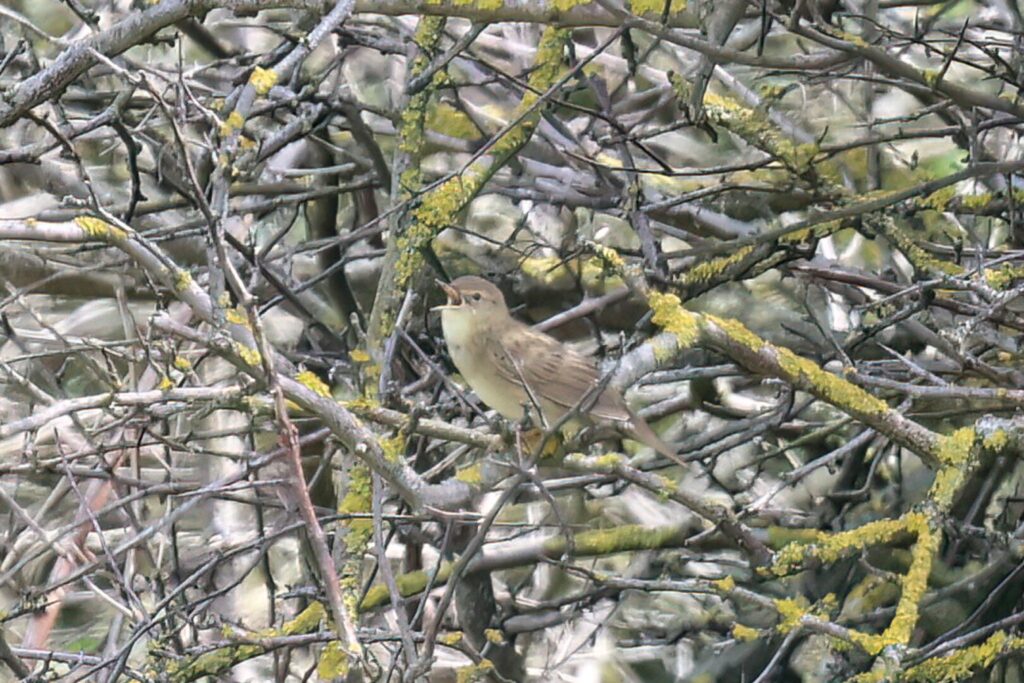
Back by the minibus, a Linnet perched obligingly in a low hawthorn by the side of the road.
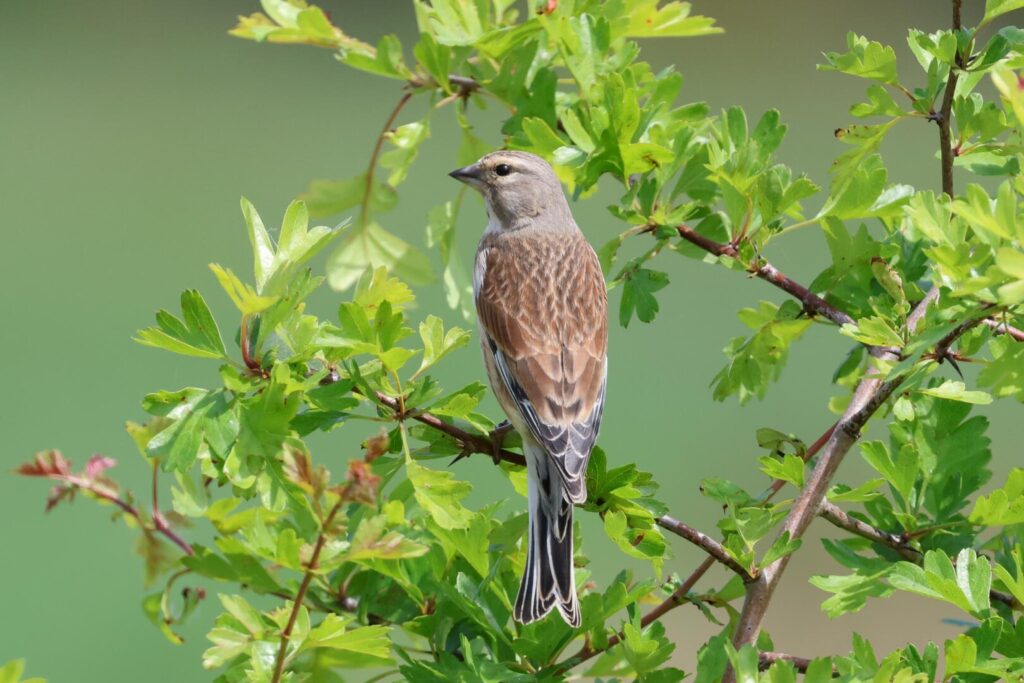
We made our way round to Titchwell now and stopped for a late lunch first in the picnic area. Afterwards, we headed out onto the reserve. As we got out past the trees, a Mediterranean Gull flew in from the west and over our heads. An immature still with black spots in its wing tips.
There were a few Common Pochard and Tufted Ducks on the reedbed pool. A Bearded Tit called and we had a glimpse of a male as it dropped into the reeds close to the path. It flew across to the other side of the borrow pit where we could see it working its way through the reeds. Then it flew out past us and across the bank, dropping down the other side, presumably to feed its hungry young. Just as we started to walk away, it flew in again.
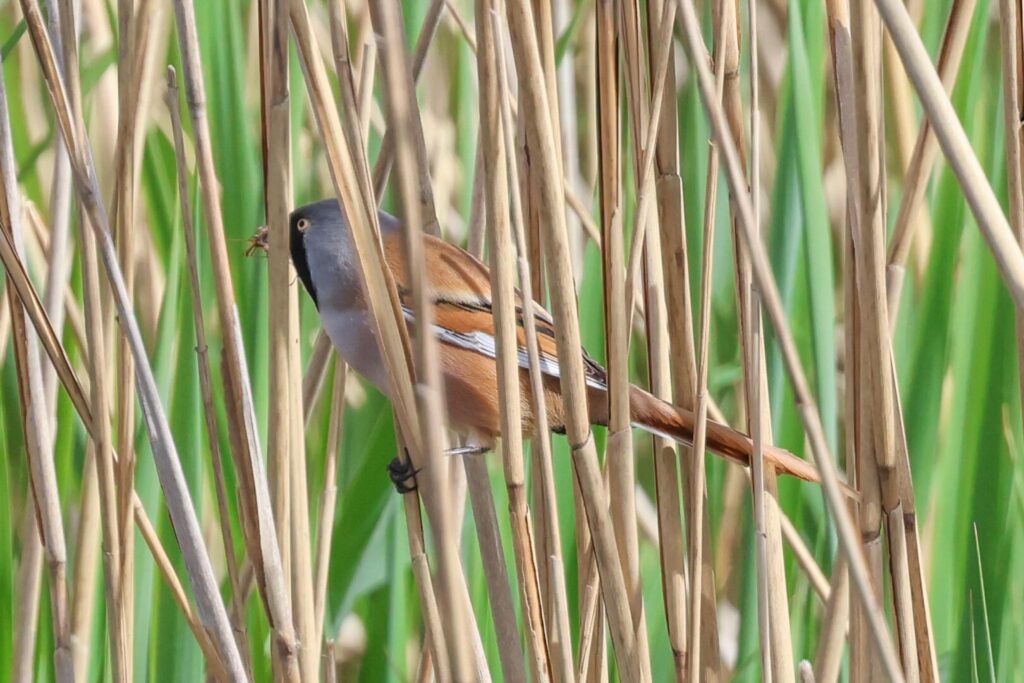
Past Island Hide, we stopped to scan the Freshmarsh from the bank. There were lots of Avocets feeding out in the water. The islands are full of breeding Black-headed Gulls but in with them now are several pairs of Common Terns which we got in the scope. We found a few more Mediterranean Gulls too, admiring their jet black hoods and white eye-liner.
Two Ruff were on the mud on the edge of the bund. One was a dark male with a full ruff, which it had puffed out. It kept bowing and then looking round, a bit of display albeit rather half-hearted. The other looked like a young male, with no ruff yet which was presumably still enough to stimulate the adult male to start performing. An unusual sight to catch them displaying here before they leave us for the continent.
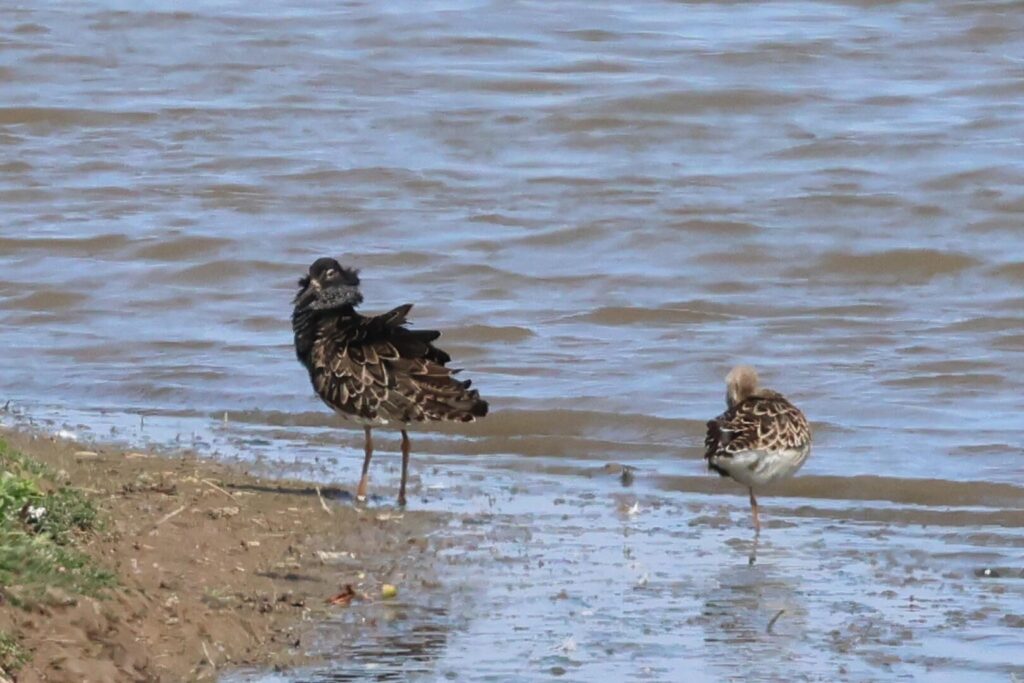
We continued on round to Parrinder Hide. There had been a Little Stint here and thanks to a couple of the volunteers we were quickly onto it, feeding on the edge of the island in front of the hide. Lovely close views, at least when it wasn’t getting chased off by one of the Little Ringed Plovers. Our second species of stint in two days and another northbound migrant stopping off here to feed.
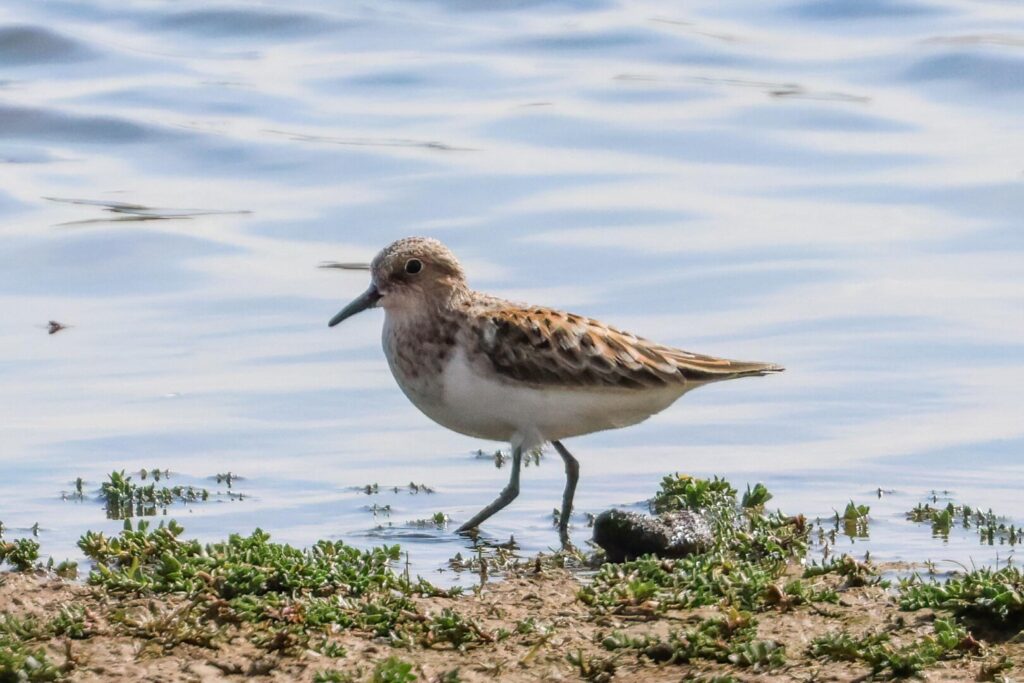
One of the group got a phone call from some friends who were also on the reserve to say that an Osprey was flying over. We raced out just in time to see it circling over towards Thornham, before heading off quickly on its way west. A nice bonus!
A Common Sandpiper was feeding along the edge of the bund in front of the other side of the hide. It worked its way right down to the front before turning and working its way back the other way. A pair of Little Ringed Plovers were watched mating at one point and a Ringed Plover was already on its nest further back. We couldn’t find the Little Gull which had been here earlier though, and it sounded like it had flown off inland.
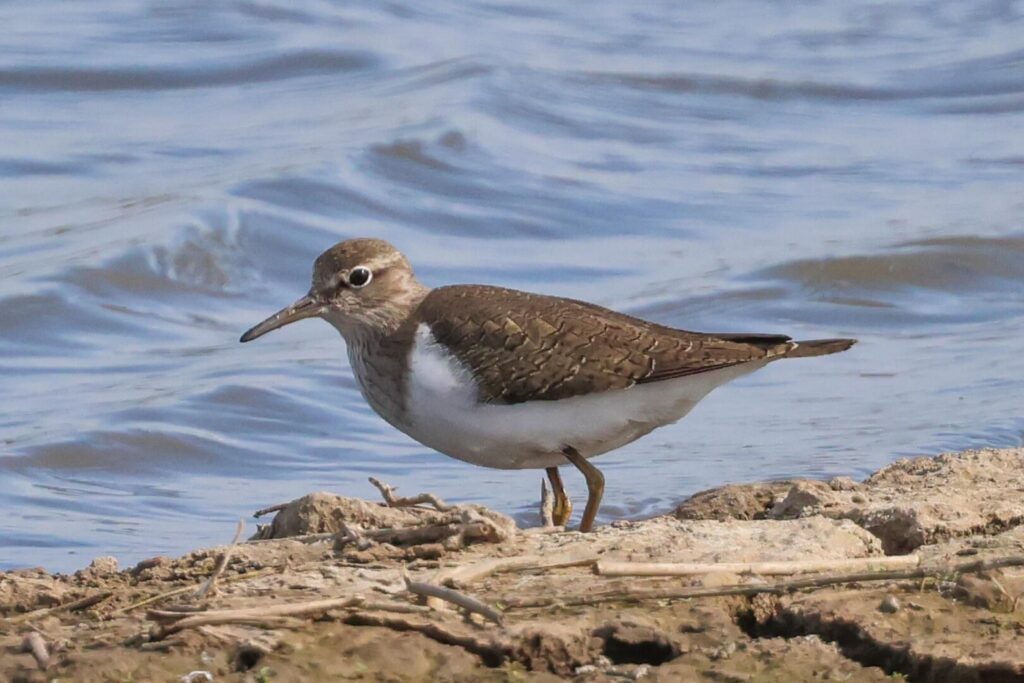
We had to start thinking about heading home, so we walked slowly back to the car park. As we drove inland, we stopped at Choseley for a quick look at the fields. A Corn Bunting was singing from the wires, which we got in the scope. A Yellowhammer was feeding on the ploughed area close by. At some point, hopefully, the Dotterel will stop in on their way north but there has been no sign of any yet here this year. We had a scan of the best looking field, but all we could find were a couple of Oystercatchers, a Skylark and a few Brown Hares.
Unfortunately then it was definitely time for us to head back or we would be late for dinner. Another exciting day – let’s see what tomorrow brings.
















